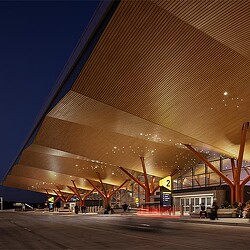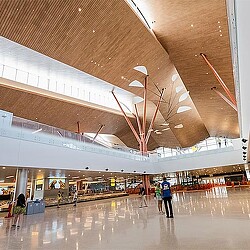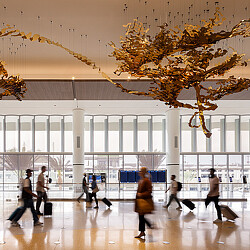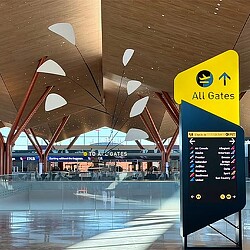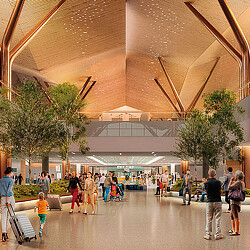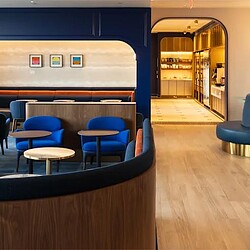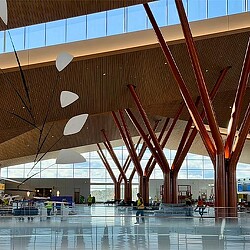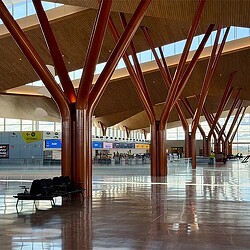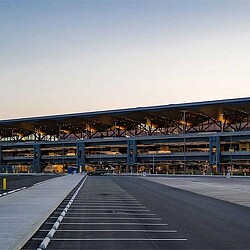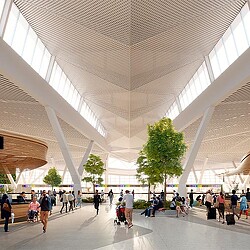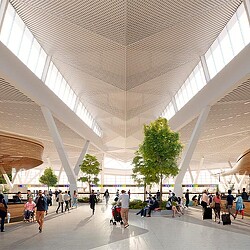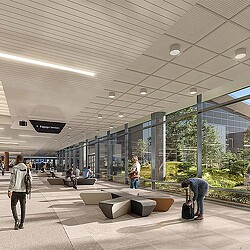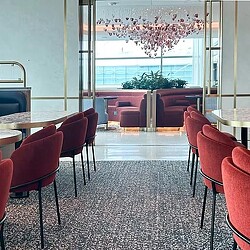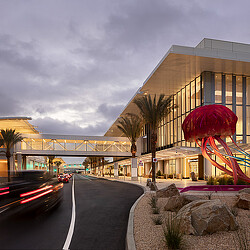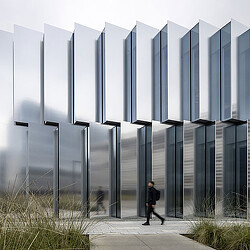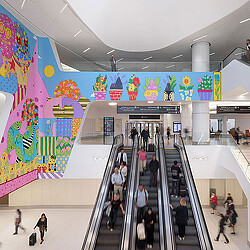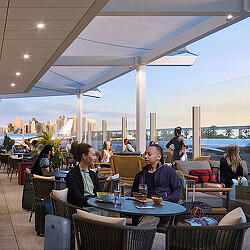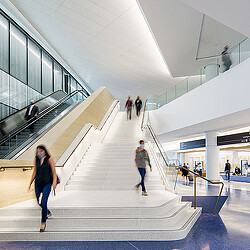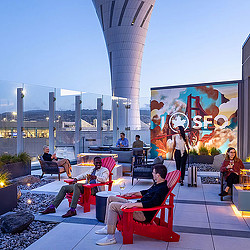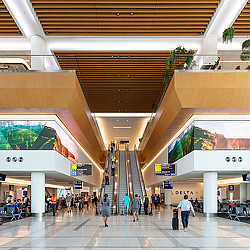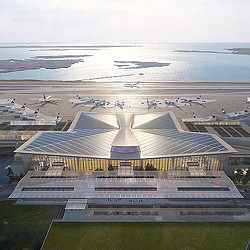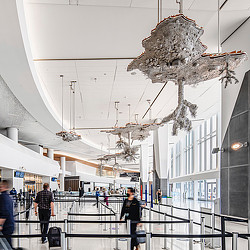Trends to Watch Shaping the Future of Airports and Aviation
Gensler’s aviation leader discusses what’s next for the future of air travel and how airports can cater to a new type of leisure traveler.
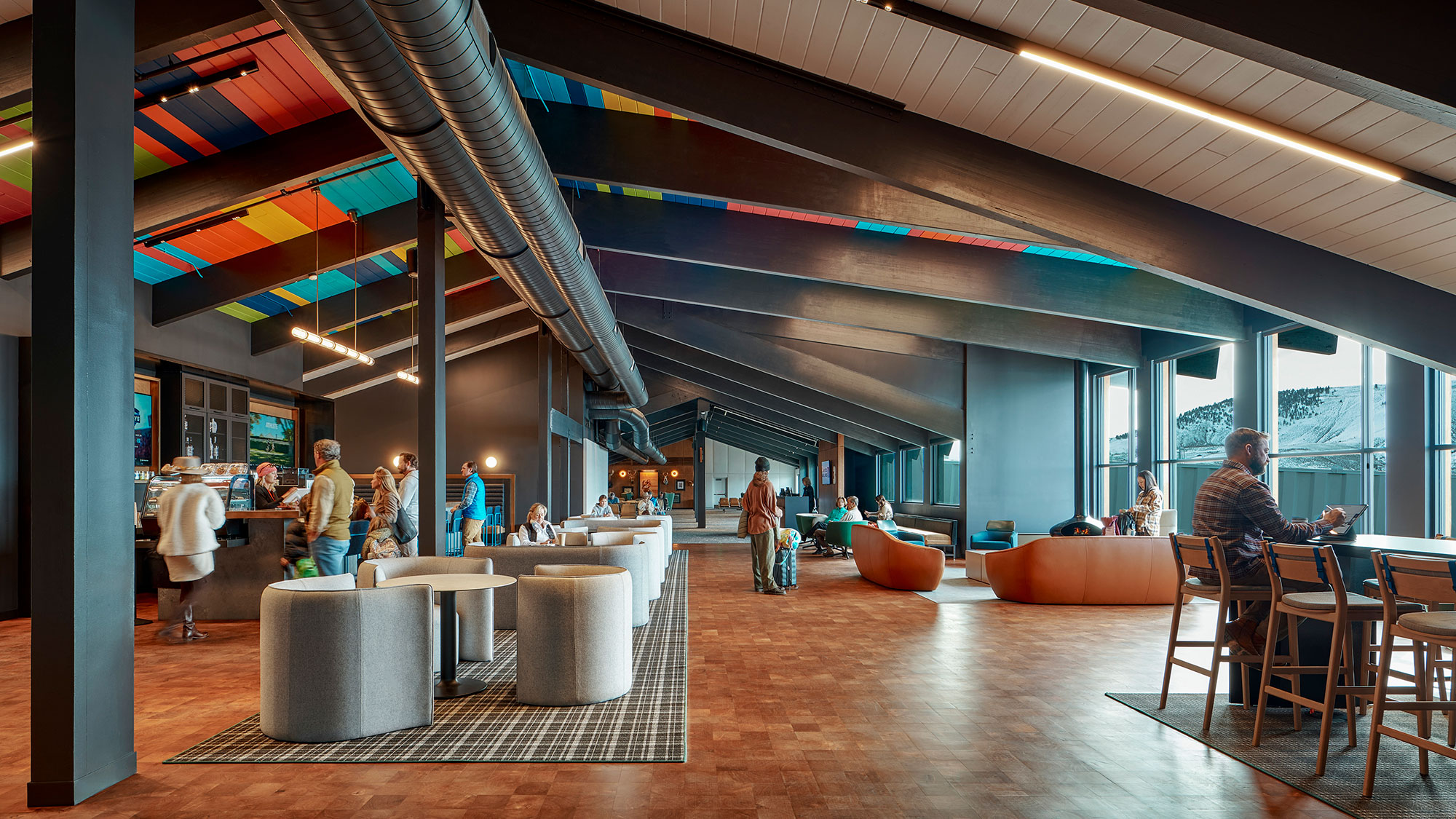
Editor’s Note: This blog is part of our Design Forecast blog series, looking at what’s next in 2025 and beyond.
The aviation industry has seen an uneven rebound in travel in a post-COVID world. Smaller regional airports that offer quicker security checks, easier navigation, and a unique local experience are recovering faster than large international hubs. Convenience, personalization, and new technologies are driving demand for new amenities and upgrades. At the same time, a new type of traveler is emerging as key to long-term growth — the leisure guest. How can airports capitalize on this new passenger type, and how can infrastructure respond?
We sat down with Gensler Aviation Leader Ty Osbaugh to discuss what’s next for the future of airports and aviation.
How has the aviation industry evolved in the past few years?
Ty Osbaugh: Today, the aviation industry has completely rebounded from COVID, but those numbers are a bit misleading. We’re at a very different spot than in 2020. We’re seeing a huge influx of international and leisure travel, where it used to be that business travel was the key driver for most airports. The business traveler is no longer dictating the decision-making approach. With companies scaling back the need for in-person meetings, discretionary spending on creating experience travel is filling the airspace void.
Facilities are shifting to meet the new prototype passenger and how the infrastructure is responding in kind. Leisure travelers tend to be in the airport a lot longer, so now you’ve got people with longer dwell times. It’s a really interesting time for airports as they start to repurpose space to accommodate the new user type and look for ways to curate the environments for the guests.
How are airports catering to this new type of leisure passengers?
Ty: To expand and grow and cater to a new type of these leisure passengers who dwell a lot longer in the airport, some airports are thinking vertically. Airports are starting to add floor plates into a terminal, which used to be a very low pancake-type building, mostly on two levels. What happens if you can now get up to five or six levels? You’re able to distribute the load of passengers and give different amenities and functions on different floors. If you make a great destination on that upper level, people will go there. It’s like visiting the Guggenheim, starting at the top and seeing everything in front of you as you descend.
If we start to think about our terminals as vertical cities with different functions on each level that provide a variety of different things for passengers to do, that’s going to be the most flexible model going forward.
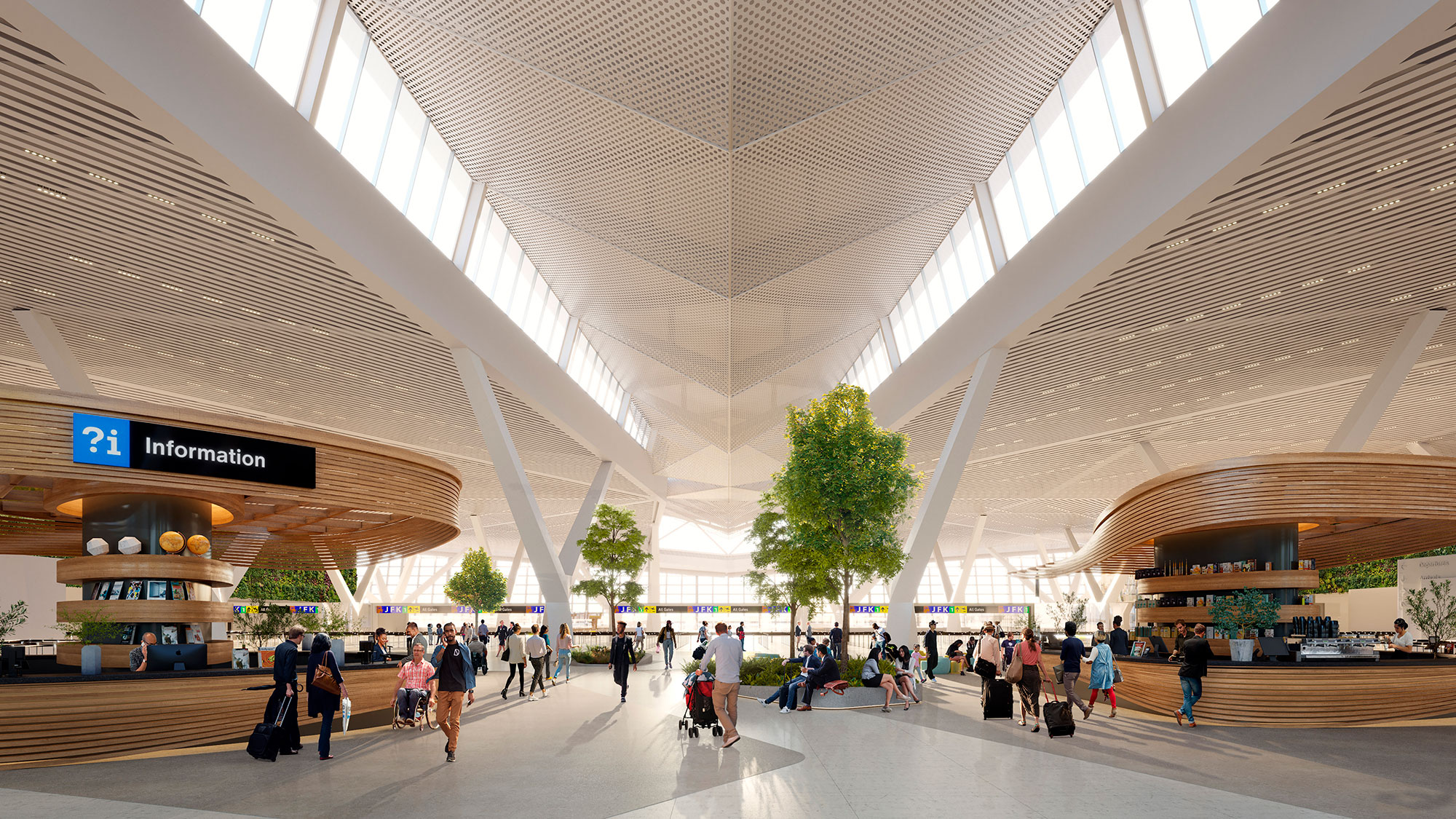
What are common pain points for travelers, and what are the choices that we as designers make to impact these pain points?
Ty: The pain points for all travelers are always going to be those unknown processes. On the inbound side, U.S. Customs and Border Protection (CBP) is always going to be a little unknown to the international passenger, especially the leisure traveler who doesn’t travel a lot.
We’re really interested in trying to find ways that we can reduce stress for that passenger type. For example, in our work at JFK, we’re putting the CBP Immigration Hall in big volume spaces with lots of natural light to try to give people a feeling that they’re not confined in a cumbersome space. Elevating the hall and keeping it out of the typical catacombs of the terminal is key to the guest journey.
We’re also using digital experiences to give people the ability to decompress while they’re waiting in line. Digital media is a great distraction, but at the end of the day, it’s all about providing passengers with information to reaffirm that they’re in the right spot.
What are some examples of airports creating hassle-free experiences and streamlining pain points for travelers?
Ty: A lot of our airport clients are asking what they can do to streamline the passenger journey, to get people from A to B a lot quicker. Smaller regional airports do that really well because they’re able to segregate passengers in a different way, and everyone’s moving at the same pace. Our large hubs struggle with this because you’ve got people who fly a lot who want to get through as quickly as possible and know all the shortcuts. People who don’t fly a lot need a lot more guidance. At regional airports, it’s a structured path, while the hubs become choose your own adventure.
We’re trying to create different channels for those people. We can create an area for passengers who need assistance to go off to the side. That clears the center of the terminal, so passengers who don’t need any help can go right through. And by doing that, we’re able to separate those passenger types and keep everything moving at a dedicated pace.
How is technology that enables personalization changing the airport experience?
Ty: Everyone’s now accustomed to mobile technology. You can check in, access your boarding pass, or print your bag tag on your phone. That’s typically an airline opt-in process that’s controlled by your reservation through the airlines. We’re now seeing that it’s becoming a partnership with the airport. So, as I’m arriving, I’m going to get a ping from the airport that says, “Here are your dining options” upon arrival. “Do you want to book a table at this restaurant? Do you want this amenity?”
So then, you can pair those two things together that now talk to each other, which is a fairly new phenomenon. By doing that, we can now start to figure out how the passenger wants to move. You can start to let AI craft the personalized journey for you. That’s where AI and the idea of automating the journey moments are really going to take off.
What other amenities are being upgraded for new airport experiences?
Ty: We’re seeing a huge influx of amenities as we’re seeing what other international airports are doing. In the U.S., we get a little bit of terminal envy, where we’re looking at social media at swimming pools and golf simulators in airports in Asia or the Middle East. That’s a completely different model.
The amenities in most U.S. airports are driven by this idea of a “lounge for all.” It used to be that airline lounges were the premium experience for frequent or affluent travelers. We’re now seeing third-party vendors, like Capital One, who are building lounges that are trying to capitalize on this idea of exclusivity, but not so exclusive that it can’t be affordable to everyone. This common lounge platform is a trend we’re going to continue to see.
The other thing that we’re really focused on is inclusive design. We’re all aging, while our airports are getting bigger. We’re starting to see airports plan lounges throughout the airport journey, one on the land side, and maybe one directly post-security, so that if I’m not able to move around the airport freely, I can be taken with a service provider to those lounges. I get the amenities that I need, but I also feel safe and secure.
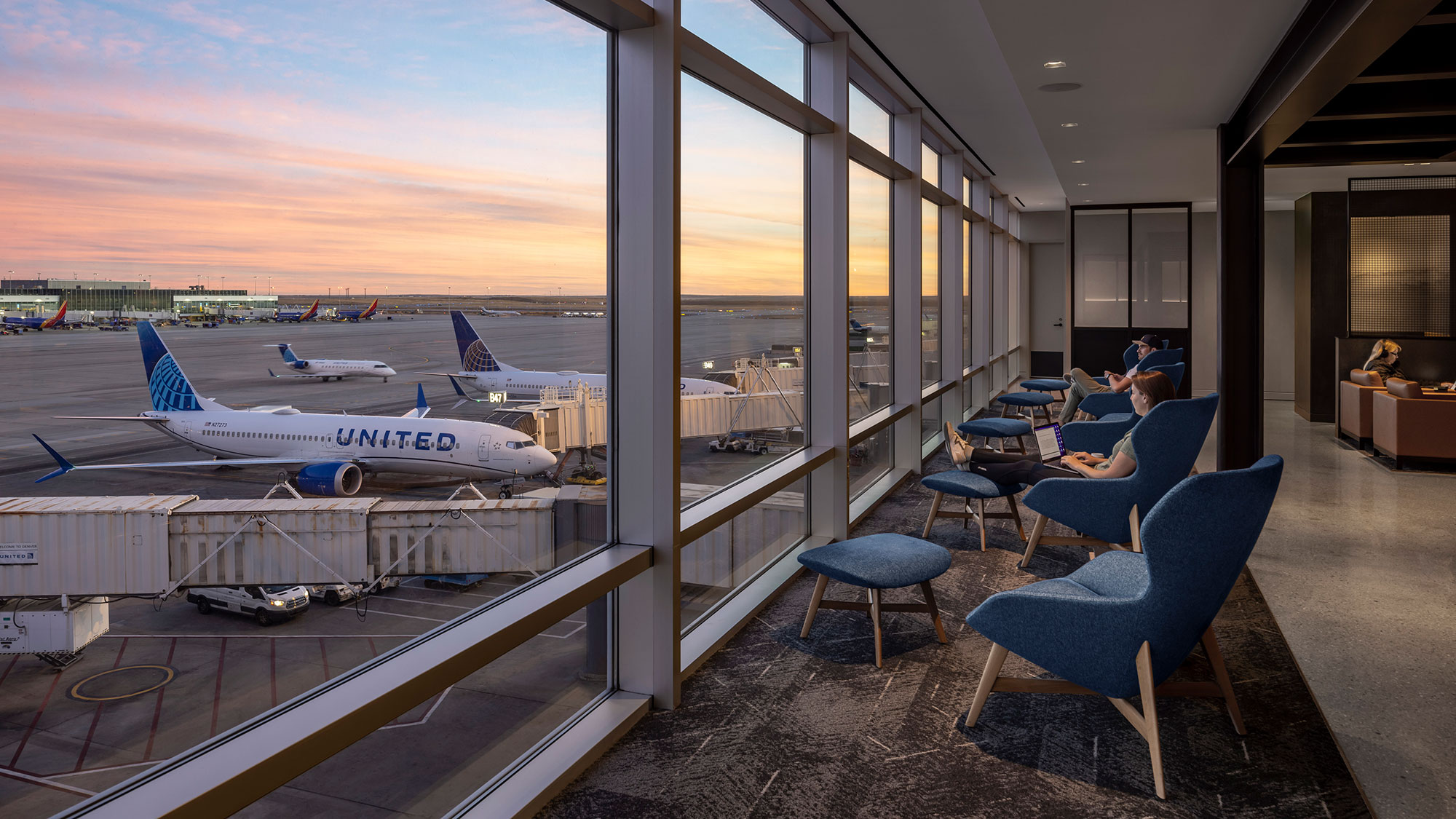
What lessons can larger, international hubs learn from smaller, regional airports?
Ty:What’s really interesting about smaller, regional airports is their predictability. In our work on the Syracuse International Airport, the key driver was not to disrupt the security process. Passengers who use Syracuse Airport know that, when they park, it’s going to take them exactly seven minutes to get from their parking spot through security. That predictability is what makes smaller airports desirable for a lot of people. Large airports are trying to take some of those lessons from smaller airports, whether through wait times or more reservation services, to implement them at scale.
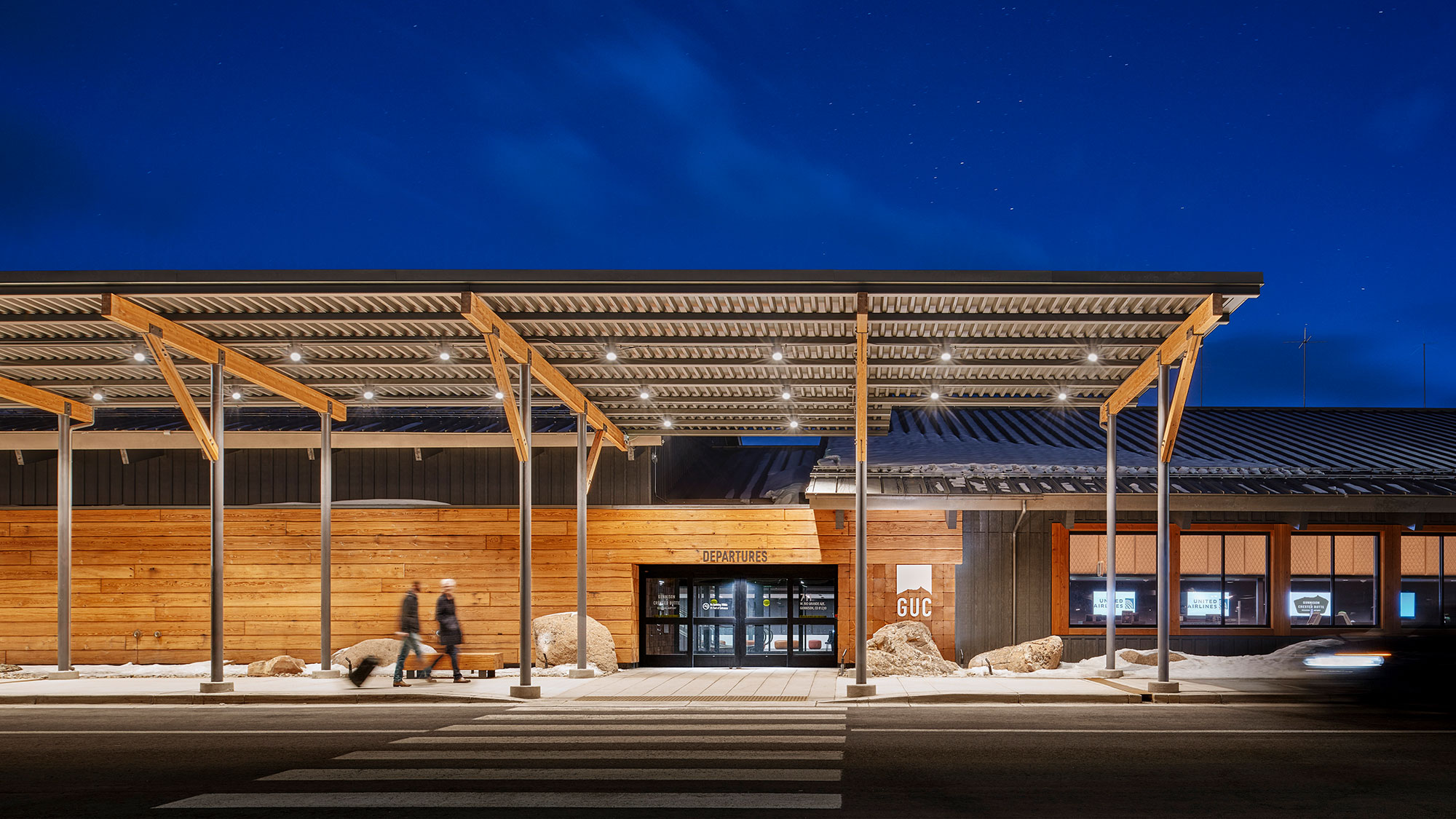
How can our infrastructure support the future of air travel?
Ty: We’re going to start to see fewer small aircraft moving from small city to small city. We’re going to see aircraft get bigger and carry more people because they’re going to get more efficient with their engines. So that means that our terminals are going to get much more complex, and the journeys through them are going to become more challenging and cumbersome.
Our challenge is to simplify that complex journey. Our designs need to anticipate the base route of what a passenger needs, to get them to those points in the most streamlined way, and then let technology fill in those other pieces.
What can airports learn from other industries, like healthcare and sports?
Ty: When you go to a sporting event, there’s anticipation and a buildup of excitement. When you look at our sports venues, we’re designing the arena, but we’re also designing the district that’s around it. When you look at what we did with the Milwaukee Bucks Entertainment District, it becomes a 24/7, active environment. And when you’re going to see the Bucks, you go hours in advance to be part of this whole spectacle around it.
As aviation designers, our challenge is to build that much excitement around the event of flying that we can get people to the airport earlier, so they can have a great time before their flight. Similarly, when you’ve landed somewhere, wouldn’t it be great to be able to come into this vibrant district to get something to eat before you go downtown and experience part of the city? This idea of making airports into an event, and making flight into a spectacle, is going to be really important going forward.
For media inquiries, email .

